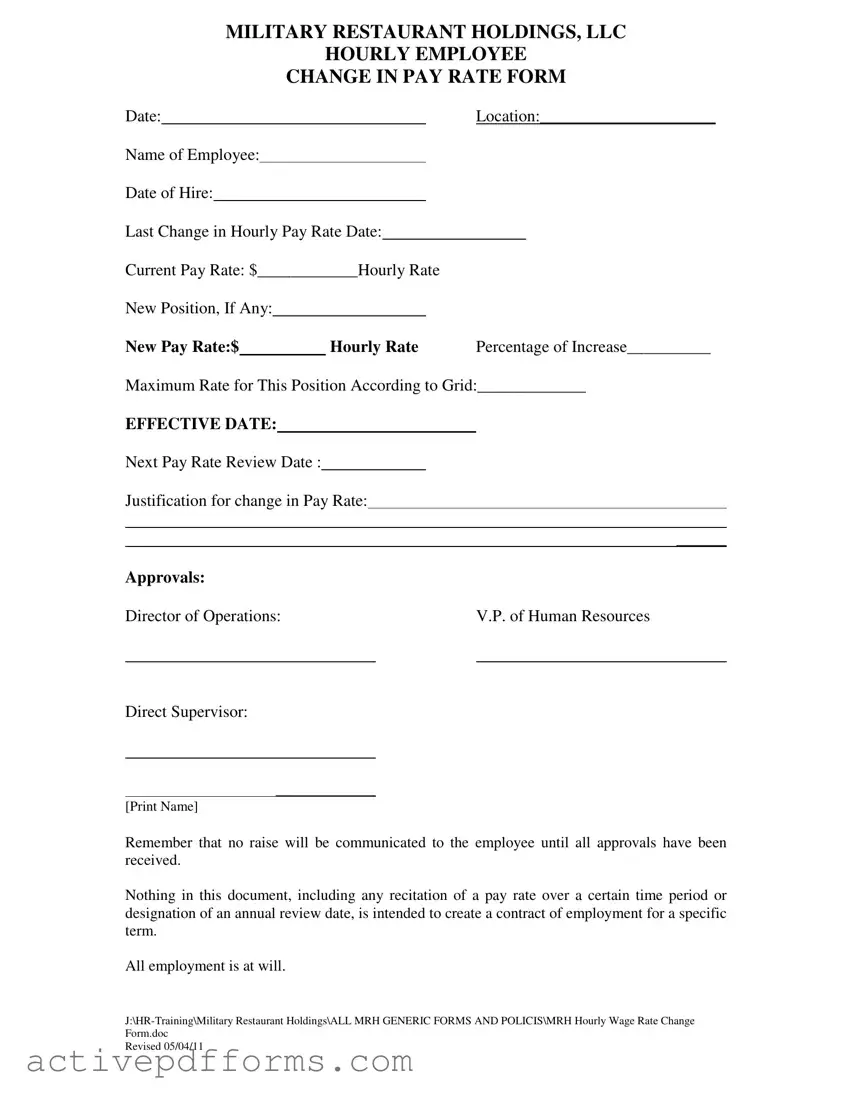Free Change Pay Rate PDF Template
The Change Pay Rate form is a document designed for the administrative recording and authorization of changes in the hourly pay rate of employees within an organization, specifically for Military Restaurant Holdings, LLC. It outlines the procedure for documenting a pay rate change, including details such as the effective date, new position (if applicable), new pay rate, and approvals needed from key personnel. Importantly, it emphasizes that no raise will be communicated to the employee until all required approvals have been obtained, highlighting the structured approach to salary adjustments and the at-will nature of employment.
Edit Change Pay Rate Now

